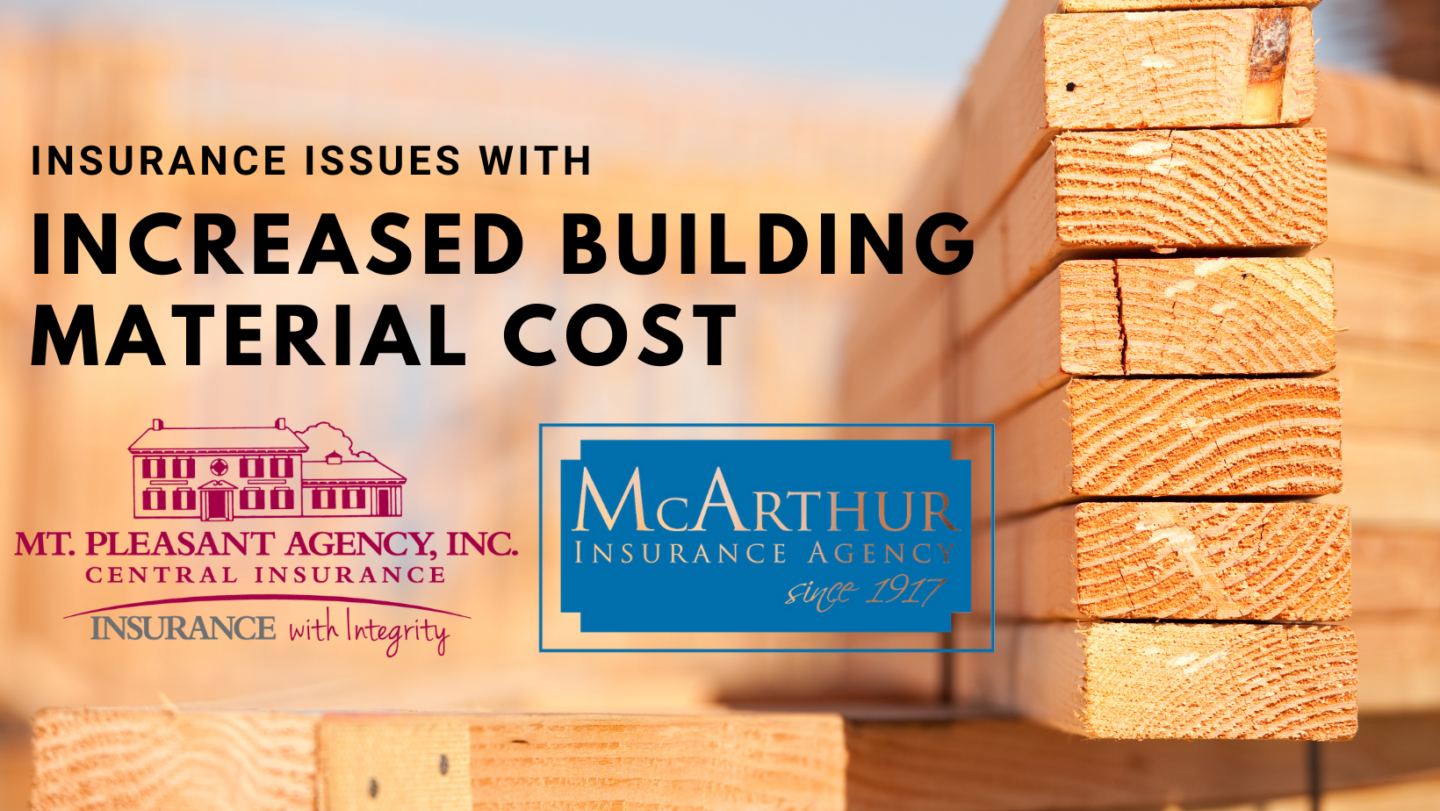
By Kurt Feight, CIC, President, Mt. Pleasant Agency, Inc. & McArthur Agency, Inc.
April 9, 2021
As we continue to see construction material costs increase in the building industry, you must take time to review and look at the impact on your insurance protection and risk. Here are just a few things you should review:
- Material Floater – This area of coverage provides coverage for materials that are being transported or stored, but not installed. Does your current policy have the limits needed? Also, review how materials at the job site are secured to prevent and lower the risk of theft.
- Builder’s Risk – With increasing cost of materials you must make sure that the limits on the building under construction are adequate. We recommend that the contractor building the structure is always the one to secure and purchase the builder’s risk coverage during the course of construction and not the homeowner. This can be very beneficial in the event of a loss because the first named insured is you, the contractor, and you are in control should a loss occur. Take into consideration any increased cost of material during the construction term.
- Tools and Equipment – Tools and equipment have also seen increases in cost. You should make an inventory of all your tools and equipment and review them with your agent to see that you have proper limits. Also, review what loss settlement you have: Actual Cash Value (depreciated) or Replacement Cost (cost to replace old for new).
- Property – Take time to review the limits on your home, detached garage, pole barn, and other commercial property. Are your limits adequate in the event of a loss? Can you rebuild the structure at the cost of today’s materials? Remember to include your time and material in this evaluation. With the increase in materials, you may find that your property is underinsured. Review and consult with your agent. Cost for newly constructed homes (depending on quality of materials) can range between $200 to $300 per square foot. Commercial property is also impacted by increased material cost. Many commercial insurance policies have coinsurance requirements. This basically states that you agree to insurance the property to replacement cost value. Most commercial policy have requirements to insure to at least 80% of the replacement cost. If your policy does not meet this requirement, you can face penalties at claim time because you are underinsured.
Take time to call your agent to review your policy and limits. Most insurance agents have the tools needed to help clients determine value and replacement cost of property.
